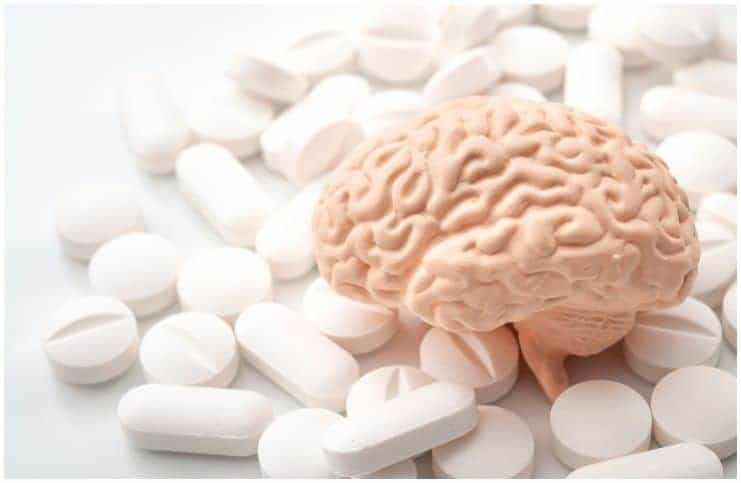Norepinephrine Functions
Norepinephrine (NE), also referred to as noradrenalin or noradrenaline (NA), is an organic chemical that is part of the catecholamine family.
It acts as both a neurotransmitter (a substance that sends signals between nerve cells) and stress hormone. In 1946, Ulf von Euler, a Swedish biologist and Nobel Prize winner, discovered NE.
NE is found in plants and is also used pharmacologically as a sympathomimetic. Its chemical formula is C8H11NO3.
It is classified structurally as a catecholamine since it contains a catechol group bound to an amine group. In the central nervous system, noradrenaline is considered a neuromodulator. Because the release of NE affects other organs of the human body, it is also referred to as a stress hormone.
NE is produced in the brain (more precisely in the Locus Coeruleus, which is a pair of structures located in the pons of the brain stem), in the adrenal glands, and the central nervous system.
It is stored in synaptic vesicles and can be broken down by enzymes. NE is elevated in the urine of individuals who consume bananas. In the brain, NE enhances the formation and retrieval of memory, promotes vigilance and focuses attention, increases alertness, arousal, anxiety, and restlessness.
The purpose of this stress hormone is to prepare the human body and brain to deal with a life-threatening physical emergency. To do this, noradrenaline increases heart rate, blood pressure, respiratory rate, and mental alertness, as well as triggers the release of glucose (sugar) into the bloodstream.
Also, it helps to shift blood flow away from areas where it might not be so vital (in that moment of physical danger), such as – the skin, toward more important areas – the muscles, to help you flee the stressful scene faster.
Attention Deficit Hyperactivity Disorder
Adults and children who have attention deficit hyperactivity disorder, usually have low levels of NE.
It is also a component of a variety of prescription medicines, like – antidepressant drugs and hypotension meds (treats low blood pressure which can occur with some surgical procedures). When injected into a vein, NE acts on a type of adrenoceptor known as an alpha receptor.
Prescription medications which imitate the effects of natural NE are frequently used to treat asthma (a condition which leads to the airways to become inflamed) since they considerably relax bronchial smooth muscle, helping the person living with asthma to breathe more easily.
Epinephrine Functions
Also referred as adrenaline or adrenalin, it is a neurotransmitter that is secreted by the medulla of the adrenal glands (these are small endocrine glands located on top of each kidney).
The word came from the Greek word ”epi-” and ”nephros” (that translates ”on the kidney”), which is actually a referring about the adrenal gland which sits atop the kidney.
It is occasionally referred to as a catecholamine since it contains the catechol moiety. It is derived from tyrosine, a nonessential amino acid in the human body. In 1895, it was identified and isolated by Napoleon Cybulski, a Polish pioneer of electroencephalography and endocrinology and physiologist.
This hormone is usually released during acute stress, and its stimulatory effects prepare and fortify an individual for either “fight or flight.” After the release of this neurotransmitter, an individual is now better prepared to escape from the danger or stress (flight) or face the threat at hand (fight).
To do this, in the bloodstream this hormone increases oxygen and glucose to the muscles and brain, and, in the same, it suppresses non-essential bodily functions.
In addition, this neurotransmitter relaxes smooth muscles in the lungs to improve breathing and reduce wheezing, constricts blood vessels to increase blood pressure, works to reduce swelling and hives which may occur around the lips and face, and stimulates the heart.
Therefore, it affects numerous bodily tissues, like – the circulatory system, muscles, and lungs.
Used As A Medicine
A healthcare specialist must prescribe prescription medicines containing adrenaline. Also, it can be administered in a hospital for cardiac arrest or severe cases of asthma.
An injection with adrenaline comes as a pre-filled automatic injection device containing a solution and in vials to inject intramuscularly or subcutaneously. Adrenaline acts quickly to stimulate the heart, improve breathing, reverse hives, raise a dropping blood pressure, as well as to reduce swelling of the lips, face, and throat.
It is contraindicated in sufferers with angle-closure glaucoma (caused by blocked fluid in internal eye structures) and in individuals with known hypersensitivity to sympathomimetic amines.
Norepinephrine vs Epinephrine – Differences
Regarding their structure, both are the same except that adrenaline has a methyl group. Also, both are similar chemical messengers released by the adrenal medulla.
However, the effects of noradrenaline are mainly mediated by the sympathetic nervous system (an essential part of the nervous system which serves to constrict blood vessels, accelerate the heart rate, and raise blood pressure), whereas that of adrenaline are mediated only by the adrenal medulla.
Image credit – Shutterstock
READ THIS NEXT: Chimichanga vs Burrito
